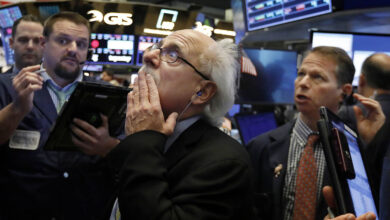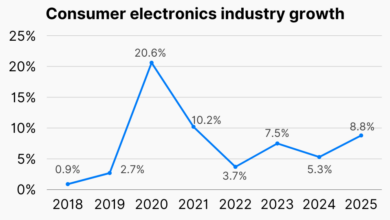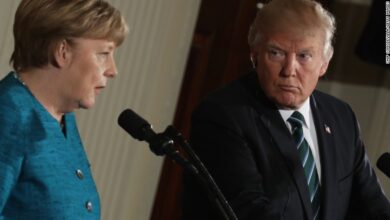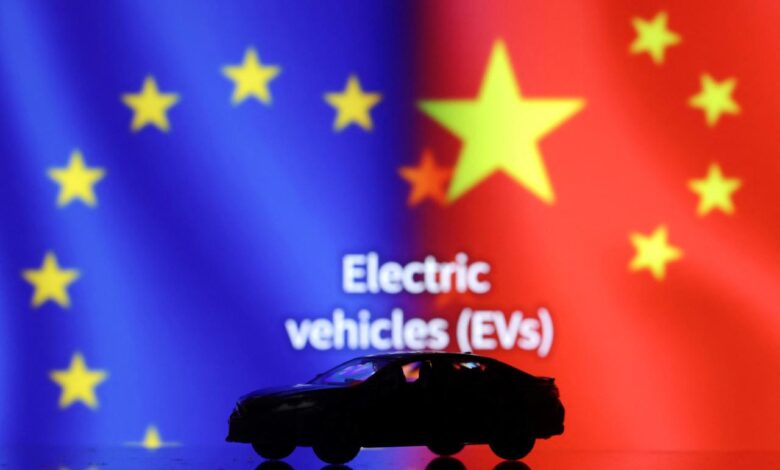
EU Hits Chinas Carmakers With Hefty Tariffs
The eu hits chinas carmakers with hefty new tariffs – EU Hits China’s Carmakers With Hefty New Tariffs – that’s the headline grabbing everyone’s attention! The European Union recently slapped significant new tariffs on Chinese car manufacturers, sending ripples throughout the global automotive industry. This move, justified by the EU as a response to alleged unfair trade practices, is sparking a major trade dispute with potentially far-reaching consequences. Let’s dive into the details and explore the impact on everyone involved.
This isn’t just about cars; it’s a clash of economic giants, a test of international trade rules, and a glimpse into the complex relationship between the EU and China. The tariffs themselves are substantial, and we’ll be looking at how they’ll affect Chinese carmakers’ bottom lines, the prices consumers pay in Europe, and the overall global automotive market. Expect some serious analysis, some surprising insights, and maybe even a few predictions about what happens next.
Impact on Chinese Carmakers
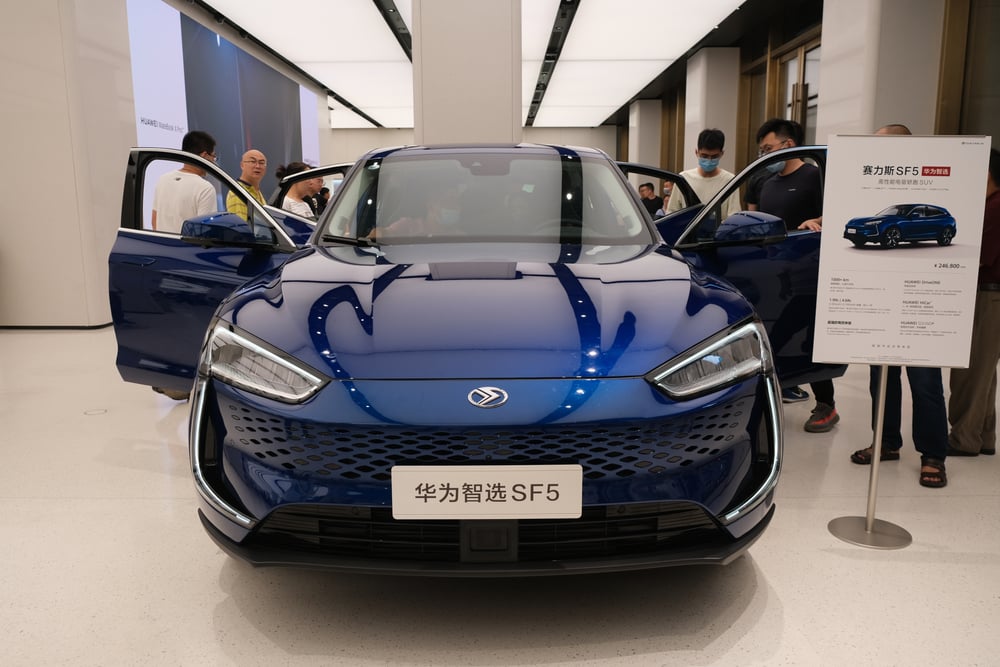
The EU’s imposition of hefty new tariffs on Chinese carmakers represents a significant challenge to the burgeoning global ambitions of the Chinese automotive industry. This move will undoubtedly ripple through the sector, impacting everything from production and sales to investment strategies and long-term growth projections. The extent of the damage will depend on several factors, including the specific tariff rates, the response of Chinese manufacturers, and the overall health of the global automotive market.The potential financial consequences for affected Chinese carmakers are substantial.
Increased costs associated with exporting vehicles to the EU will directly erode profit margins. This is especially true for companies heavily reliant on the EU market for sales. We can anticipate a reduction in revenue, potentially forcing companies to cut costs, reduce production, or even consider restructuring operations. Companies like Nio, XPeng, and BYD, who have been actively expanding into European markets, could experience significant setbacks, potentially affecting their ability to secure further investment and expand their market share.
Financial Losses and Market Share
The tariffs will undoubtedly lead to a decline in Chinese car exports to the EU. The higher prices resulting from the tariffs will make Chinese vehicles less competitive against established European and other international brands. This price increase will likely reduce consumer demand, leading to lower sales volumes and impacting the overall profitability of exporting to the EU. The extent of the decline will vary depending on the specific car models and the price sensitivity of EU consumers.
The EU’s new tariffs on Chinese carmakers are a big deal, impacting global trade significantly. It’s a complex situation, almost as complex as understanding the diverse ecosystem of Yellowstone National Park, like learning about the mammals of Yellowstone – from bison to wolves. Getting back to the car tariffs, this move could trigger retaliatory measures, further complicating the already tense economic landscape.
For example, a luxury electric vehicle might experience a smaller sales drop compared to a more budget-friendly model, as consumers in the luxury segment might be less price-sensitive. This loss of market share could be particularly damaging for Chinese companies aiming to establish a strong foothold in the European market.
Potential Retaliatory Measures
China is unlikely to remain passive in the face of these tariffs. Retaliatory measures could take various forms, from imposing tariffs on European car imports into China to implementing non-tariff barriers, such as stricter regulatory requirements or increased bureaucratic hurdles for European automakers operating in China. This could lead to a tit-for-tat trade war, negatively impacting both the EU and Chinese automotive industries.
For instance, China could increase tariffs on luxury vehicles from Germany, a major player in the European auto industry, creating a ripple effect across the European economy. The potential for escalating trade tensions poses a considerable risk to the stability of the global automotive industry.
The EU’s hefty new tariffs on Chinese carmakers are a significant blow, impacting global trade dynamics in unexpected ways. It reminds me of the insidious influence described in this article, fethullah gulen tried to transform Turkey in the subtlest ways , where gradual, almost imperceptible changes had profound consequences. Similarly, these tariffs could subtly reshape the automotive landscape, leading to unforeseen adjustments in the market.
Impact on the Global Automotive Industry Landscape
The EU’s tariffs will reshape the global automotive landscape. While European carmakers might initially benefit from reduced competition, the broader implications are complex. The trade dispute could disrupt supply chains, affecting the production of vehicles globally. Furthermore, the increased uncertainty will likely discourage investment in the automotive sector, hindering innovation and slowing down the overall growth of the industry.
The long-term effects could include a shift in production locations, with companies potentially reconsidering their manufacturing strategies and investment plans in light of the heightened trade tensions. The overall outcome remains uncertain, but it is clear that the current situation will necessitate significant adaptation and strategic recalculation from all players involved.
Impact on EU Consumers and Businesses
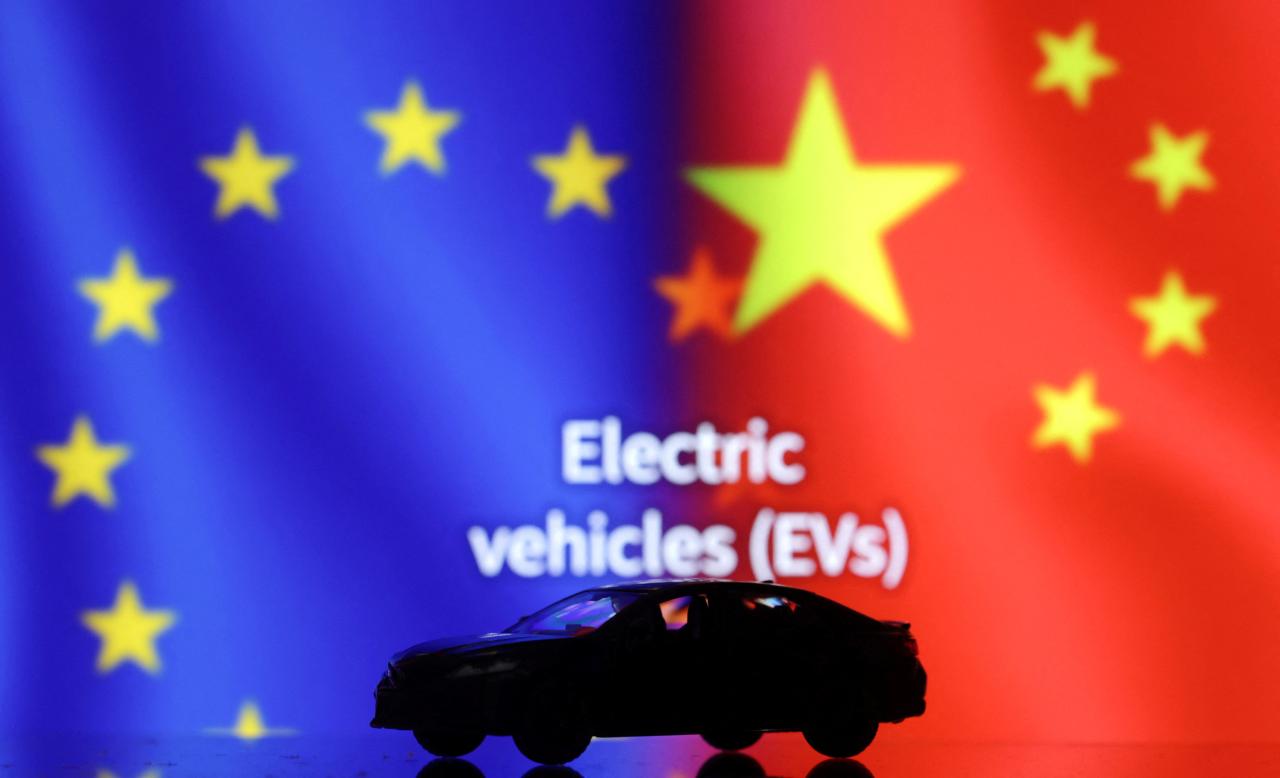
The newly implemented hefty tariffs on Chinese car imports into the EU are poised to significantly reshape the automotive landscape within the Union. These tariffs, designed to protect domestic and other international manufacturers, will inevitably impact both consumers and businesses, leading to a complex ripple effect throughout the EU economy. Understanding these impacts is crucial for navigating the changing market dynamics.The tariffs will almost certainly lead to a price increase for Chinese cars sold in the EU.
This is a direct consequence of the added cost imposed by the tariffs, which manufacturers will likely pass on to consumers to maintain profitability. The extent of the price increase will depend on several factors, including the specific tariff rate, the car’s initial price, and the manufacturer’s pricing strategy. Some manufacturers might absorb part of the cost to remain competitive, but a price rise is almost unavoidable.
Price Increases for Chinese Cars in the EU, The eu hits chinas carmakers with hefty new tariffs
The increased cost of Chinese cars will directly affect consumer purchasing power. Consumers might find themselves paying considerably more for a vehicle from a Chinese manufacturer, potentially shifting their preferences towards other brands or postponing their car purchases altogether. This could also lead to a decline in the sales volume of Chinese cars in the EU, impacting the market share of these brands.
For example, a car previously priced at €20,000 might see a price increase of €2,000-€3,000 depending on the tariff rate and the manufacturer’s decision on how much to absorb.
Impact on Consumer Choice and Competition
The price increases will undoubtedly influence consumer choice. Consumers, particularly those on tighter budgets, might opt for more affordable alternatives, potentially boosting sales of European or other non-Chinese brands. This could intensify competition within the EU car market, potentially leading to innovative pricing strategies and enhanced product offerings from other manufacturers. Conversely, it might also reduce the overall variety available to consumers, as some Chinese manufacturers may find it challenging to compete in the price-sensitive EU market.
Impact on EU Businesses in the Automotive Supply Chain
The tariffs’ impact extends beyond the final consumer. EU businesses involved in the automotive supply chain, such as parts suppliers, dealerships, and repair shops, could experience both positive and negative effects. While some businesses might see reduced demand for Chinese-made parts, others could benefit from increased demand for domestically produced alternatives. Dealerships specializing in Chinese brands might face a decline in sales, while those focusing on other brands could experience a boost.
The overall impact on these businesses will depend on their specific role in the supply chain and their ability to adapt to the changing market conditions.
Price Changes of Selected Chinese Car Models
| Car Model | Pre-Tariff Price (€) | Tariff Rate (%) | Post-Tariff Price (€) (Estimate) |
|---|---|---|---|
| MG ZS EV | 28000 | 10 | 30800 |
| BYD Atto 3 | 35000 | 15 | 40250 |
| Aiways U5 | 32000 | 12 | 35840 |
| Ora Funky Cat | 29000 | 10 | 31900 |
Geopolitical Implications
The EU’s imposition of hefty tariffs on Chinese carmakers represents more than just a trade dispute; it’s a significant development with far-reaching geopolitical implications, potentially reshaping the complex relationship between the EU and China and influencing global trade dynamics. This move reflects a growing trend of economic nationalism and strategic competition between major global powers.The tariff dispute underscores the increasing economic rivalry between the EU and China.
The EU hitting Chinese carmakers with hefty new tariffs is a tough blow, highlighting the complexities of global trade. It makes you think about the cost of progress, and how easily things can go wrong; consider reading about the dark history of abuse in medical research to see just how far that cost can extend. Ultimately, the EU’s decision on these tariffs will likely impact consumers and the automotive industry significantly.
Both are vying for global economic dominance, and this clash over the automotive sector highlights the struggle for technological leadership and market share. The tariffs are likely to intensify existing tensions, potentially spilling over into other areas of cooperation, such as climate change initiatives, technology standards, and investment agreements.
Impact on EU-China Relations in Other Areas
The automotive tariff dispute could significantly strain relations between the EU and China beyond the immediate economic impact. For example, ongoing negotiations on a comprehensive investment agreement could be jeopardized. Trust between the two blocs may erode, hindering future collaborations on issues requiring mutual cooperation. China might retaliate with tariffs on EU goods, escalating the trade war and negatively impacting European businesses.
The incident could also affect diplomatic relations, with less willingness for compromise on other issues.
Examples of Trade Tensions Between Major Economic Powers
The EU-China tariff dispute is not an isolated incident. Similar trade tensions have emerged repeatedly between major economic powers, often with significant global consequences. The US-China trade war under the Trump administration, characterized by tit-for-tat tariffs on a wide range of goods, serves as a prime example. This trade war disrupted global supply chains, increased uncertainty for businesses, and contributed to global economic slowdown.
Another example is the ongoing trade dispute between the US and the EU over agricultural subsidies, which highlights the challenges of balancing free trade with domestic industry protection. These examples demonstrate the potential for trade disputes to escalate quickly and have wide-ranging effects on global economic stability.
Timeline of Key Events Leading to Tariff Imposition
The escalation of tensions leading to the EU’s tariff imposition on Chinese carmakers wasn’t sudden. A detailed timeline helps to understand the progression:
This section requires specific dates and events related to the EU-China car tariff dispute to populate the timeline. Publicly available information from reputable news sources, official EU and Chinese government statements, and trade organization reports should be consulted to construct an accurate timeline. For example, it might include dates of investigations into alleged dumping or unfair subsidies, formal announcements of tariff proposals, periods of negotiation or consultation, and the final date of tariff implementation.
Long-Term Effects and Potential Solutions: The Eu Hits Chinas Carmakers With Hefty New Tariffs
The EU’s hefty new tariffs on Chinese carmakers represent more than just a trade dispute; they signal a potential reshaping of the global automotive landscape. The long-term consequences could be far-reaching, impacting not only the involved nations but the entire industry’s structure and competitiveness. Understanding these potential effects and exploring viable solutions is crucial for mitigating negative impacts and fostering a more collaborative future.The imposition of these tariffs could lead to several significant long-term consequences.
Firstly, it might trigger retaliatory measures from China, escalating the trade war and creating uncertainty for automotive businesses worldwide. Secondly, it could hinder innovation and technological advancements, as reduced trade limits the sharing of expertise and resources between the EU and China, two major players in the automotive sector. Finally, consumers in both regions could face higher prices and reduced choice due to supply chain disruptions and decreased competition.
Potential Strategies for Resolving the Trade Dispute
Effective resolution requires a multifaceted approach that prioritizes open communication and mutual understanding. Negotiations should focus on identifying the underlying concerns driving the tariffs, such as allegations of unfair competition or intellectual property theft. Transparency and a commitment to fair practices are essential for building trust and finding common ground. Independent arbitration or mediation could be employed to facilitate a neutral and objective assessment of the situation.
A commitment to adhering to agreed-upon solutions and implementing effective monitoring mechanisms is crucial to ensure long-term compliance.
A Hypothetical Compromise Scenario
One potential compromise could involve a phased reduction of tariffs, contingent on China addressing specific concerns raised by the EU. This phased approach would allow both sides to adjust to the changing market dynamics while minimizing disruption. For instance, China might commit to strengthening its intellectual property protection laws and enforcing them rigorously. In return, the EU could gradually reduce tariffs, potentially linked to measurable progress in these areas.
This approach fosters a collaborative spirit and provides incentives for both sides to meet their obligations. This could involve establishing joint working groups to monitor progress and address any emerging issues. A similar approach was seen in the past with the EU and the US, where phased reductions in tariffs were tied to progress on specific trade issues.
Economic Benefits of EU-China Automotive Cooperation
Cooperation between the EU and China in the automotive sector offers substantial economic benefits for both regions. Joint ventures and technology sharing could lead to the development of more efficient and sustainable vehicles, benefiting consumers worldwide. Increased trade would stimulate economic growth, create jobs, and enhance competitiveness. Furthermore, collaborative research and development could accelerate the transition to electric vehicles and other innovative technologies, addressing climate change concerns.
The combined expertise and market size of the EU and China would create a powerful force in shaping the future of the automotive industry. A collaborative approach could potentially lead to a scenario where both regions benefit from economies of scale and increased innovation, much like the success seen in other industries with global collaboration. For example, the collaborative efforts in the semiconductor industry have led to significant advancements and economic growth for participating nations.
Visual Representation of Tariff Impact
Data visualization is crucial for understanding the complex effects of the new EU tariffs on Chinese car sales. Two key visuals – a bar graph and a pie chart – can effectively illustrate the pre- and post-tariff market landscape. These graphs, while hypothetical, can be easily replicated using real data once it becomes available.
By comparing sales figures before and after the tariff implementation, we can gain a clear picture of its impact on the Chinese automotive industry’s presence in the EU market. Similarly, a pie chart effectively showcases the shift in market share among various car manufacturers.
Bar Graph: Percentage Change in Chinese Car Sales
This bar graph would visually represent the percentage change in sales of Chinese cars within the EU. The x-axis would represent time periods: “Before Tariffs” and “After Tariffs”. The y-axis would display the percentage change in sales, with positive values indicating an increase and negative values indicating a decrease. Two bars would be displayed for each time period, one representing the total number of Chinese car sales, and the other representing the percentage change from the previous period.
For example, if Chinese car sales were 100,000 before tariffs and dropped to 80,000 after, the “After Tariffs” bar would show a -20% change. Error bars could be included to represent the uncertainty in the sales figures. The title of the graph could be: “Percentage Change in Chinese Car Sales in the EU (Pre and Post-Tariff)”.
Pie Chart: Market Share of Chinese Carmakers in the EU
The pie chart would illustrate the market share of Chinese car manufacturers in the EU before and after the tariff implementation. Each slice of the pie would represent a different Chinese car brand, with the size of the slice corresponding to its market share. Two separate pie charts would be presented: one for the pre-tariff period and one for the post-tariff period.
The percentage market share for each brand would be clearly labeled within each slice. For instance, if brand A held 10% of the market before tariffs and 8% after, this change would be clearly visible. A legend would identify each car brand. The title could be: “Market Share of Chinese Carmakers in the EU: Pre- and Post-Tariff Implementation”.
To enhance clarity, the charts could use different colors for each brand to maintain consistency between the pre- and post-tariff charts.
The EU’s decision to impose hefty tariffs on Chinese carmakers is more than just a trade dispute; it’s a statement about global economic power and the future of international trade relations. The impact will be felt across the board – from Chinese manufacturers struggling to maintain market share to European consumers facing higher prices. The long-term consequences remain uncertain, but one thing is clear: this situation will continue to shape the global automotive landscape for years to come.
The coming months will be crucial in seeing how this trade war unfolds and what solutions, if any, are found.

